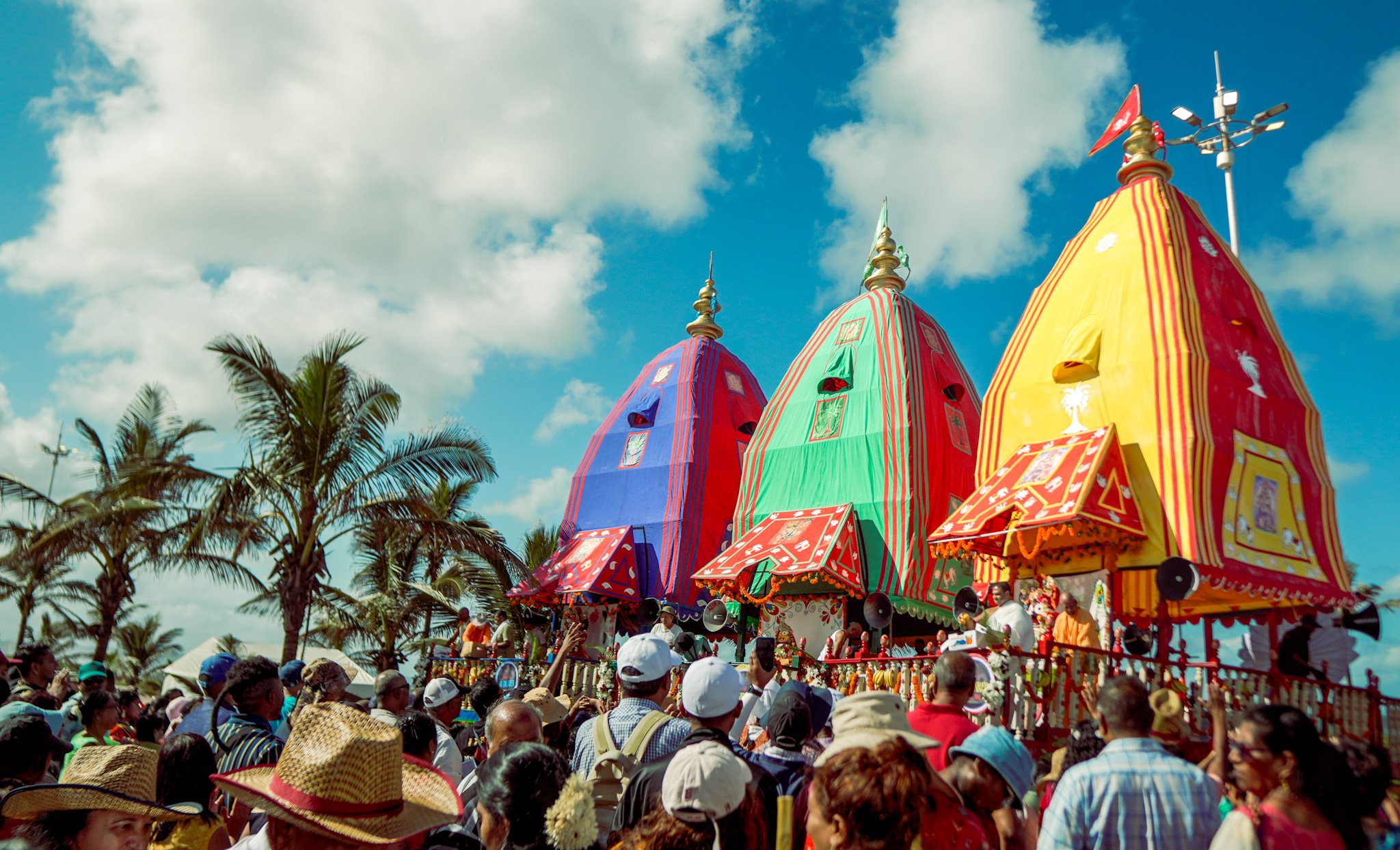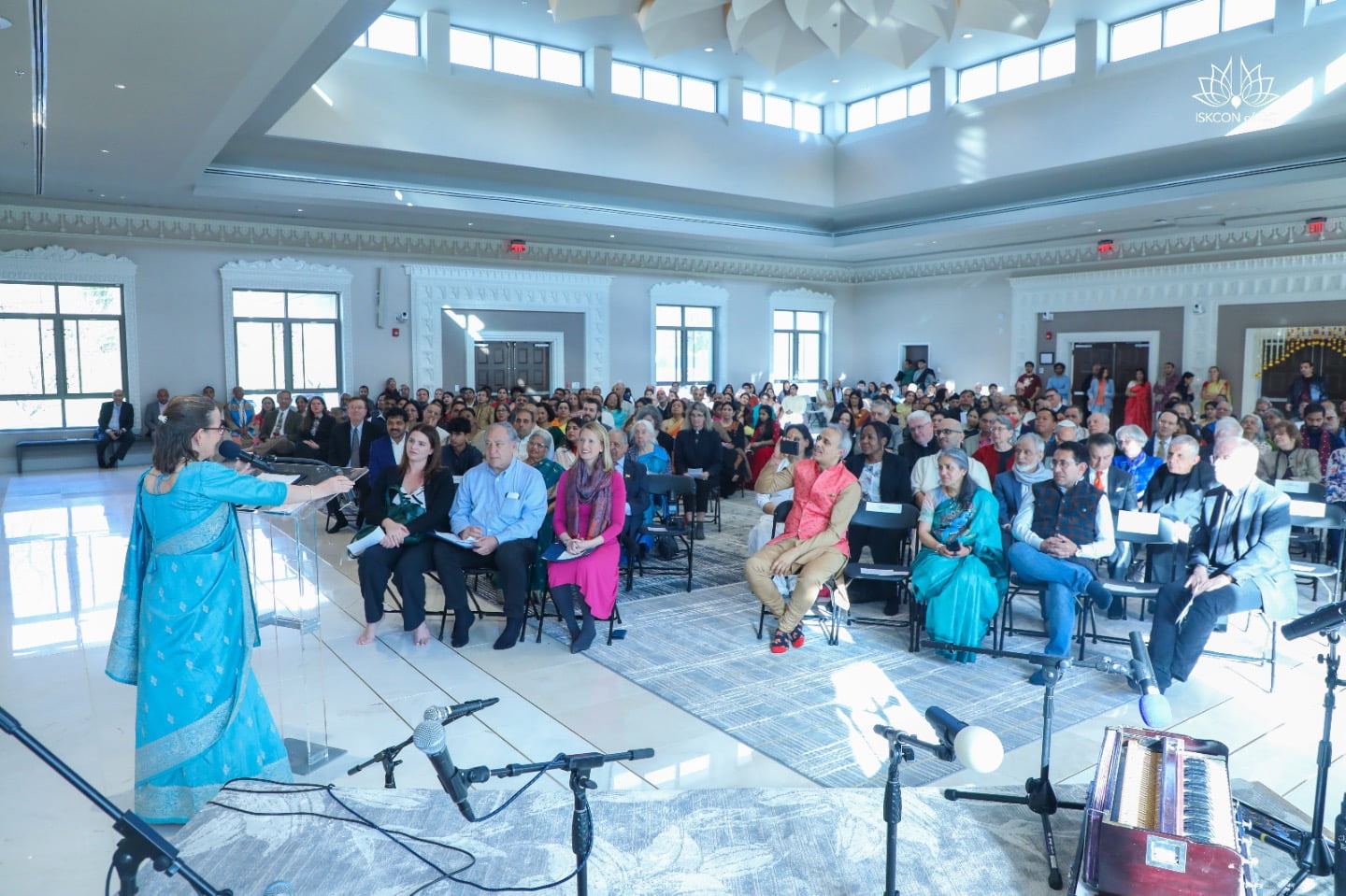Vaisnavism Disrupted – It Happened Already; Won’t It Happen Again?
By Kaunteya Das | Jul 24, 2020

Lord Caitanya walks with a few close associates. It’s medieval India Lush green fields flank the path; a countryside scene of peace and harmony with nature. Idyllic. The occasional farmer on bullock cart marvels at the beauty and bearing of this young, golden-complexioned renunciant. The followers of the Lord enjoy His company and expectantly wait for the new developments in His mission; Sri Caitanya had taken sannyasa some days before, ending His household days. He is on His way to Puri, which he elected as His new headquarters. When He enters the temple, He is overwhelmed by the potency of his intense love for Jagannatha, and faints right away, disconnecting from external awareness for hours.
Contemplating these and other divine pastimes in Puri, one might be tempted to see them – and specifically the worship of Divine Forms of Jagannath, Subhadra and Baladeva – as beyond time and space; beyond the interactions of political forces, in a fourth dimension transcendental to strife and mundane history.
But let’s not forget that those same Deities in front of Whom Lord Caitanya lost consciousness, just the previous year had been hidden away on a small island in the nearby Chilika Lake. The priests had carried Them away because of the invasion by Ismail Ghazi, the commander of the Sultan of Bengal, Hussain Shah. It was 1509 and at that time the Hindu ruler of Orissa, King Prataprudradeva, had been away in the South. He rushed back and drove away the attackers. The Deities could return to Their temple.
And this was only the fourth of the eighteen invasions recorded in the temple chronicle known as Madalapanji. Others had been much more disruptive. During the first such invasions, for instance, the Deities were carted away to a village, Gopali, where they remained buried for 146 years.
The fifth invasion took place in 1568, a few decades after Lord Caitanya had wounded up His visible pastimes. The invader was Kalapahara, of Afghani descent, army commander of Sulaiman Karrani, the Sultan of Bengal. Also on this occasion the servitors of the temple hid Jagannath, Subhadra and Baladeva in the Chillika Lake; but this time Kalapahara easily learned Their whereabouts, seized Them, transported Them by elephant to the bank of the Ganges, and burned Them.
A Vaisnava saint, Bisher Mohanty, managed to salvage the “Brahmas” – the “soul” of the wooden forms – and brought Them back to Orissa, but it took some seven years before the Deities could be relocated back in their Puri temple.
And this hadn’t been the only time that the wooden forms of the Deities had been destroyed, Their temple plundered, Their wealth stolen or Their servants killed.
And it was not just Muslims. The ninth invasion was at the hands of Jagirdar Kesodasmaru, a Hindu, in 1610 A.D. He and his men occupied the main temple dressed as pilgrims during the Rathayatra, while Jagannatha, Subhadra and Baladeva were at the Gundica temple. After fighting and killing many of the local king’s soldiers, burning the Rathayatra carts to the ground and looting the Lord’s property, they left Puri.
The last recorded attack happened in 1881, by followers of Mahima Dharma, a local religion popular with underprivileged castes, a group focused against caste-consciousness and Brahmanism. They attacked the temple, dragged the Deities on Puri’s Grand Road and burned Them.
So, the Deities, the devotees and their places of worship have experienced all sorts of assaults for centuries. And this is not a peculiarity of Puri. Think of Mathura, the birthplace of Lord Krishna, where wave after wave of invaders killed devotees, plundered and destroyed temples and smashed Deities.
The first to arrive was Mahmud Ghazni, in 1015. He burnt temples with naphtha and fire, levelling them to the ground. The army plundered the city for twenty days and then carried away five great Deities of pure gold adorned with precious stones – the eyes were rubies – and many more made of silver; so many that it took more than one hundred camels to carry them. More than 5,000 local devotees were taken away as slaves.
Devotees kept practicing and built an imposing, shining white marble temple on Krishna’s birthplace. In 1516, while Lord Caitanya’s was still manifesting His pastimes on Earth, a Sikander Lodi of the Delhi Sultanate destroyed the temple. He was famous for razing temples to the ground and giving the Deities to butchers to use as meat-weights. Imagine the mental agony and the physical danger for devotees at these times.
Mathura witnessed some restoration during the reign of Akbar (1556-1605). In Vraja he granted land and revenue in perpetuity to no less than thirty-five temples. With his encouragement, his Vaisnava generals and officials of his court built several of the most important temples in the area. In 1570 Akbar went to Vrindavana to meet with Srila Jiva Gosvami and became his admirer.
But the spirit of tolerance established by Akbar quickly evaporated. Akbar was killed by his son Jahangir, who restarted destroying temples and terrorizing devotees.
But wanton destruction reached its climax with Aurangzeb. He reversed the religious policies of his grandfather Akbar and ordered the destruction of temples at Mathura and Varanasi. During the first year of his reign he descended in person on Mathura and razed the temple of Kesava Deva to the ground; with the rubbles he built a mosque, which is still standing. His generals carried the Deity to Agra, where it was broken into pieces and placed under the steps leading to the Nawab Begum Sahib’s mosque so that, in the words of the Mughal historians, the faithful could walk upon it and prove their faith.
Mathura even lost its name and became Islamabad.
Mathura suffered another wave of devastation during the invasion of Ahmad Shah Abdali, the Afghan ruler, who invaded India several times. In 1757, during his fourth expedition, he plundered Mathura and Vrindavana. According to contemporary chroniclers, to terrorize the vanquished people, he offered his soldiers a reward of five rupees (worthy much more than today) for every Hindu massacred; he thus raised mountains of slaughtered bodies. Thousands of survivors were taken to Afghanistan as slaves.
So far we touched only upon Puri and Mathura, but what to speak of the pain Vaisnavas experienced in the rest of India. And Muslims were not the only ones to persecute the devotees.
(Yes, fanatic followers of Islam did their quota of destruction, but I hate when devotees lump all of the 1.6 billion of present Muslims together with the marauders of the past, as if they were all mini-Aurangzebs instead of monotheistic brothers and sisters. Let’s not forget that for centuries Islam was instrumental in establishing God-centered civilization on various continents – end of editorial.)
In South India for instance, Visnu-bhaktas have been persecuted by rulers of the Sivaite persuasion – a branch of the same Vedic tree. And among the various European invaders, the Portuguese were particularly zealous. An order, dated 30 June 1541, mandated to destroy Hindu temples, seize their properties and transfer them to the Catholic missionaries. Five years later King Joao III issued another order, applicable in all Portuguese possessions in India, to forbid Hinduism, destroy Hindu temples, prohibit the public celebration of Hindu festivities, expel Hindu priests and severely punish those who created any Hindu images. All books in Sanskrit and Konkani were incinerated. In 1569, a royal letter recorded that all Hindu temples in the Portuguese Indian colonies have been burnt and razed to the ground.
After Srila Prabhupada brought Krishna consciousness to the rest of the world, violence against Vaisnavas took place on a wider scale, on the global stage. In the former Soviet Union, for instance, the communist regime incarcerated and tortured ISKCON. Books could be written about the persecution they experienced, and at least one book, Salted Bread, was indeed written.
On 3 October 1990, in Liberia, West Africa, seven ISKCON devotees – five men and two women – were shot to death. Their crime? One of them had written a letter to the local warlord, Prince Johnson, asking him to stop killing people. Despite the fact that he had visited the temple and had permitted prasada distribution, the letter angered him so much that he suddenly decided to kill all the devotees. He rounded them up in a jeep, brought them to a nearby river, and executed them. Two temple residents survived by hiding on trees.
We could go on, describing how the government of Turkmenistan destroyed two ISKCON temples that the devotees had painstakingly built through the years. The same government kept a lady devotee in prison for six years for overstaying her visa; a transgression that, according to the local law, should have fetched her a maximum of three years.
We could talk about the demolition of a temple (and the stealing of land) by a local government in Kazakhstan; or about the bloody attack on the ISKCON temple in Armenia; or about the banning of ISKCON in Bolivia, due to political games and intrigues. You get the idea: devotees are not immune from trouble in this world.
The discomfort ISKCON faces due to the pandemic – individual and community-wise – is hardly comparable to the oppressions and torments of the past. Yes, some devotees lefts their body. Some lost their jobs – and perhaps more will; it’s a serious source of anxiety but can it compare to, say, being killed by invading hordes or being shipped to a foreign country as a slave? Yes, some temples are seriously struggling financially – a distressful challenge – but can it match the agony of seeing attackers snatching the Deities from the altars, dragging Them in the street, and burning or shattering Them into pieces?
And – who knows? – the present pandemic-related difficulties may end up looking like a pleasant stroll in a rose garden on a nice sunny day, compared to the trouble the world may soon experience due to global warming and climate change.
I hate to write the following and final paragraph, but as Krishna consciousness keeps spreading in every country, becoming more influential and therefore more upsetting to opposing forces and disturbing to vested interests, I wouldn’t be surprised to see devotees becoming even more harassed, mistreated and discriminated against. Lord Caitanya said that His name would be heard in every town and village; but He didn’t say that there won’t be costs involved. All considered, throughout the tortuous, treacherous meandering of historical events, the chanting of the holy name and the capacity to see the mercy of the Lord within reverses remained, remains, and will remain the only permanently accessible and reliable shelter.












